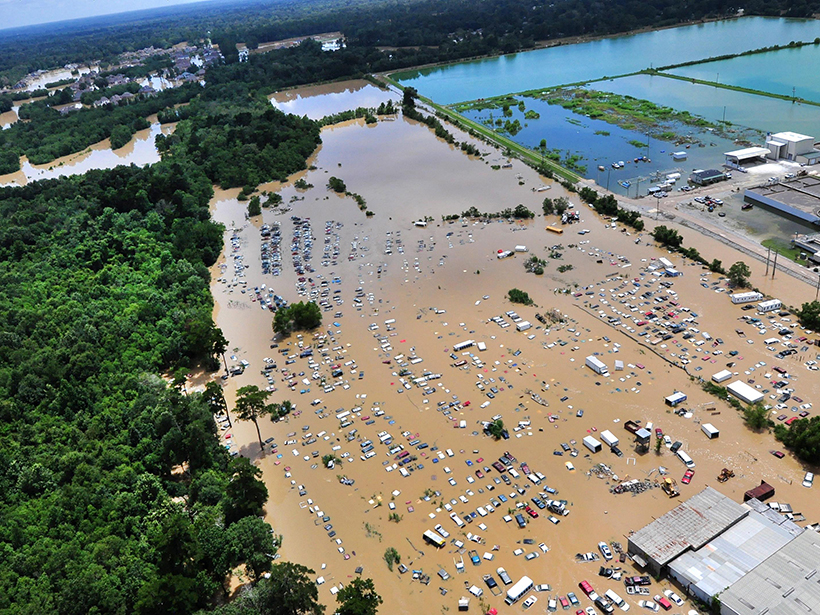Source: Water Resources Research
Flowing water has tremendous power. It can carry heavy boulders and carve massive canyons. Scientists continually work on understanding the specifics of one of the most common types of flowing water: runoff that occurs from a rainstorm. In a warming world where rainfall is becoming concentrated in heavy precipitation events, this is more crucial than ever before. The recent floods in Louisiana bear testament to this reality.
Although there are plenty of rainfall-runoff models—computer simulations that convert rainfall into runoff predictions—these models often lack analytical expressions for converting storm event rainfall into runoff. An exception is the Soil Conservation Service (now the Natural Resources Conservation Service) curve number method, which consists of a simple expression for converting storm event rainfall into runoff. Graphically, this expression is a curve, and the shape of this curve is controlled by one water storage parameter that is referenced with a curve number (CN) index. Runoff CNs are based on factors such as soil type, land use, and topography. Rainfall-runoff curve expressions are not found in most existing models.
Here Bartlett et al. present a rainfall-runoff curve with a general form that unifies the Soil Conservation Service CN method with many existing rainfall-runoff models. With this expression, users can quickly compare these different models and rainfall-runoff data without the need for numerical simulations of the rainfall event. In other words, users can get a well-defined estimate of the runoff amount at a location on a river given any hypothetical rainfall amount by just using a water retention index like the local CN.
Although the models are mathematically derived, the authors analyzed their results by using data from the Davidson river watershed, an area of approximately 104 square kilometers in North Carolina. The U.S. Geological Survey has recorded streamflow at the watershed outlet and rainfall at Lake Logan, a man-made reservoir in the watershed, since 1998. With the rainfall and streamflow data, the team estimated what the rainfall-runoff curve should have looked like and then compared this data-derived curve to the analytical expressions specific to each model.
In addition, the authors’ method extends the general rainfall-runoff curve to represent different types of runoff, be it water seeping within the soil near the stream or gushing down a hillslope. Like the quintessential event-based model—the Soil Conservation Service CN method—this general rainfall-runoff curve may then be related to land use, climate, geology, and other characteristics. (Water Resources Research, doi:10.1002/2016WR019084, 2016)
—Shannon Hall, Freelance Writer
Citation:
Hall, S. (2016), Modeling rainfall runoff, Eos, 97, https://doi.org/10.1029/2016EO062109. Published on 03 November 2016.
Text © 2016. The authors. CC BY-NC-ND 3.0
Except where otherwise noted, images are subject to copyright. Any reuse without express permission from the copyright owner is prohibited.

